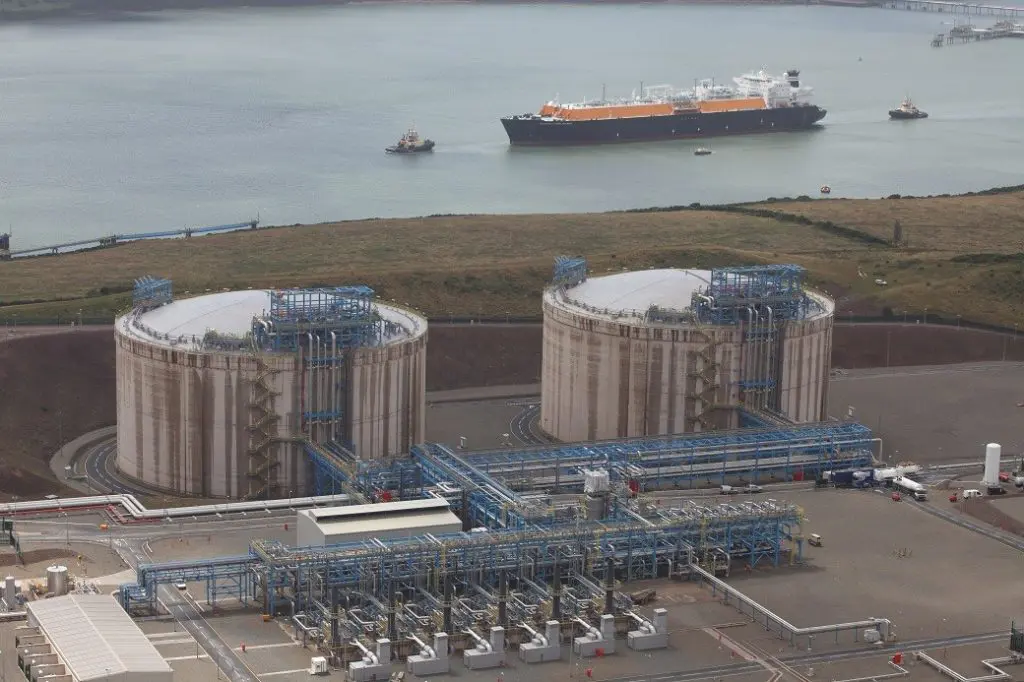This story requires a subscription
This includes a single user license.
Last month, global LNG imports increased by 2.94 Mt y-o-y to 37.78 Mt, the strongest y-o-y increase since November 2022, Doha-based GECF said.
According to GECF, this also represents a record high for global LNG imports during the month of March.
Europe led the increase, with additional imports for the MENA region, offsetting weaker imports in other parts of the world.
GECF said the TTF gas price continued to trade at a premium to Asian spot LNG prices, encouraging US LNG flows to Europe over Asia.
For the first quarter of 2025, global LNG imports rose by 3.6 percent y-o-y (3.90 Mt) to 111.36 Mt, driven primarily by stronger European imports, it said.
European LNG imports surge
In March 2025, LNG imports in Europe surged by 44 percent (4 Mt) y-o-y to reach 13.06 Mt, which represents the highest monthly LNG imports since December 2022, GECF said.
The stronger LNG imports were driven by weaker pipeline gas imports, an uptick in gas consumption and the higher netback price for LNG cargoes delivered into Europe compared to Asia.
GECF said the UK led the rise in the region’s LNG imports, followed by France, Türkiye, Spain, Italy, and Poland.
During the first quarter of 2025, Europe’s LNG imports reached 36.95 Mt, representing an increase of 22 percent (6.74 Mt) y-o-y.
GECF said the rise in UK LNG imports was driven by reduced pipeline gas imports from Norway and declining domestic production.
In France, lower pipeline gas imports from Norway and low gas storage levels led to a surge in LNG imports.
Türkiye saw a sharp increase in LNG imports as gas consumption for electricity generation rose due to reduced hydroelectric output.
GECF said Spain’s LNG imports grew on the back of higher domestic gas consumption and increased pipeline gas exports to neighbouring countries.
In Italy, weaker pipeline gas imports from Norway and Russia and stronger gas consumption contributed to the growth in LNG imports.
Meanwhile, Poland’s LNG imports rose due to increased gas consumption and higher pipeline exports to Ukraine, GECF said.
Asia Pacific LNG imports continue to drop
GECF said Asia Pacific’s LNG imports continued to slide for the fifth consecutive month in March, falling by 4.1 percent (0.97 Mt) y-o-y to 22.88 Mt.
The decline was primarily driven by weaker gas demand in China and more attractive spot LNG prices in Europe, which pulled US LNG cargoes away from the region, according to GECF.
China, India, and Thailand accounted for most of the decrease, partially offset by higher imports in South Korea.
In the first quarter of 2025, Asia Pacific’s LNG imports dropped by 4.7 percent (3.40 Mt) y-o-y to 68.84 Mt.
In China, a sharp decline in LNG imports was driven by reduced gas demand due to higher average temperatures in March compared to the previous year, which lowered heating requirements, GECF said.
This was compounded by stronger pipeline gas imports and increased domestic gas production.
GECF said the decline in LNG imports in India and Thailand was mainly due to reduced shipments from the US, as more favorable spot LNG prices in Europe diverted cargoes away from Asia.
Meanwhile, the surge in South Korea’s LNG imports was attributed to lower storage levels, following weaker imports in January and February.
Latin America and MENA
LNG imports in the Latin America & the Caribbean region stood at 0.84 Mt, representing a 37 percent (0.48 Mt) y-o-y decline, according to GECF.
The decrease was primarily driven by Brazil, Colombia, and the Dominican Republic, partially offset by higher imports in Jamaica.
For the first quarter of 2025, LAC’s LNG imports fell by 17 percent (0.57 Mt) y-o-y to 2.74 Mt.
In Brazil and Colombia, improved hydro output compared to the previous year reduced the need for LNG imports, GECF said.
The decline in the Dominican Republic’s LNG imports was entirely due to lower volumes from the US, it said.
Meanwhile, increased LNG imports from Mexico and Nigeria supported Jamaica’s LNG demand and enabled a rebound in LNG re-exports to Puerto Rico, GECF said.
On the other hand, the MENA region’s LNG imports continued to surge, rising by 130 percent (0.57 Mt) y-o-y, reaching 1 Mt, which is the highest imports level for March since 2016, GECF said.
In the first quarter of 2025, the region’s LNG imports increased by 126 percent (1.47 Mt) y-o-y to 2.64 Mt.
GECF said the stronger LNG imports came mainly from Egypt and Jordan.
Egypt’s LNG imports have continued to rise to compensate for a domestic gas shortfall.
Additionally, Egypt has been importing LNG via the Aqaba FSRU in Jordan, with the regasified LNG then transported by pipeline into the country.
LNG exports up 9.8 percent
GECF said that global LNG exports surged by 9.8 percent (3.50 Mt) y-o-y to reach a monthly record of 39.23 Mt, marking the highest annual growth rate since June 2021.
The increase was supported by higher exports from both GECF and non-GECF countries, along with a rise in LNG re-exports, it said.
For the first quarter of 2025, global LNG exports rose by 3.9 percent (4.11 Mt) y-o-y, reaching 110.65 Mt driven primarily by higher exports from non-GECF countries.
According to GECF, the share of non-GECF countries in global LNG exports edged up from 52.2 percent in March 2024 to 52.8 percent in March 2025.
Likewise, the share of LNG re-exports increased from 0.4 percent to 1.2 percent over the same period, while the share of GECF member countries declined from 47.4 percent to 46 percent.
GECF said the US, Qatar, and Australia were the top three LNG exporters in March 2025.

